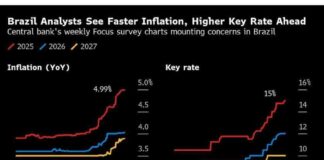The European Securities and Markets Authority (Esma) is looking to expand its powers to oversee major stock exchanges and other critical parts of the EU’s financial infrastructure in an effort to become the European version of the US Securities and Exchange Commission (SEC). Verena Ross, the chair of Esma, expressed that there is a political appetite within the European Commission to centralize more financial market supervision in the EU.
Esma was established in 2011 to enhance rule harmonization across the EU, but the majority of its financial market activities are still supervised by the 27 national authorities of the bloc. While Esma directly supervises only a few entities such as credit rating agencies, non-EU central counterparty clearing houses, securitization repositories, and benchmark administrators, the idea of transferring more powers to Esma has gained momentum recently.
Mario Draghi, the former President of the European Central Bank, highlighted the transformation of Esma into an SEC-like body as crucial for boosting Europe’s capital markets. His report emphasized giving Esma authority to supervise large multinational issuers, cross-border financial markets, and central counterparties. However, smaller EU countries like Luxembourg and Ireland have concerns that this shift could negatively impact their financial sectors.
Ross believes that empowering Esma could enhance the efficiency of Europe’s financial markets for both investors and issuers. She suggests a gradual approach to building up Esma’s powers rather than an immediate transformation into a powerful European SEC. Starting with supervising major cross-border players like Euronext and Deutsche Börse could pave the way for broader supervision in the future.
Regarding the upcoming regulation of crypto markets, Ross questioned whether EU-level oversight would have been more effective than leaving it to national authorities. Draghi also proposed enhancing Esma’s independence from national authorities by incorporating independent members on its board, similar to the ECB’s supervisory board.
Ross, however, defended the current governance structure of Esma, stating that national supervisors’ involvement is crucial due to the implementation’s national-level nature. She emphasized the importance of considering the diversity of legal systems within the EU markets and focusing on central supervision where it is most needed at present.
In conclusion, the push to strengthen Esma’s powers reflects a broader effort to revitalize Europe’s capital markets and enhance financial market supervision across the EU. The debate surrounding the evolution of Esma into a European SEC equivalent underscores the complexities and considerations involved in centralizing financial market oversight in the EU.






















